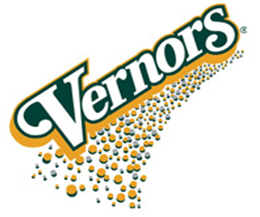
Vernors
usinfo | 2013-05-17 16:14

Vernors Ginger Ale is a soft drink, and the oldest surviving brand of such in the United States. It was created in 1866 by James Vernor, a Detroit pharmacist.
History
Although Vernors is the oldest surviving ginger ale sold in the United States, there were a number of brands of ginger ale, ginger soda, and ginger beer sold in commerce prior to 1866.
Formula legend and reality
According to company legend, prior to the start of the American Civil War, while a clerk at the Higby & Sterns drugstore in Detroit, James Vernor experimented with flavors in an attempt to duplicate a popular ginger ale imported from Dublin, Ireland. When Vernor was called off to serve in the war, he stored the syrup base of 19 ingredients, including ginger, vanilla and other natural flavorings, in an oak cask. Vernor joined the 4th Michigan Cavalry on August 14, 1862 as a hospital steward, was promoted to second lieutenant on September 20, 1864, and was discharged on July 1, 1865. After returning from battle four years later, he opened the keg and found the drink inside had been changed by the aging process in the wood. It was like nothing else he had ever tasted, and he purportedly declared it "Deliciously different," which remains the drink's motto to this day.
In a 1936 interview, however, James Vernor Jr., admitted that the formula was not developed by his father until after the war was over. This was confirmed in a 1962 interview with former company president, James Vernor Davis.
According to the 1911 trademark application on "Vernor's" as a name for ginger ale and extract, Vernors ginger ale first entered commerce in 1880, not 1865.
Company history
Vernor opened a drugstore of his own on Woodward Avenue, at the corner of Clifford Street and sold his ginger ale at its soda fountain. City by city, Vernor sold bottling franchises, with operators of those franchises required to strictly adhere to the recipe. In 1896, Vernor closed his drugstore and opened a soda fountain closer to the city center, on Woodward Avenue south of Jefferson Avenue, near the ferry docks on the Detroit River to concentrate on the ginger ale business alone. Initially, Vernors was only sold via soda fountain franchises.
The early Vernors soda fountains featured ornate plaster, lighting and ironwork featuring a "V" design, examples of which still exist, such as at the Halo Burger restaurant in Flint, Michigan. Later Vernors was bottled for home consumption.
James Vernor died October 29, 1927 and was succeeded by his son, James Vernor Jr. Expansion continued throughout Prohibition. Just prior to the onset of World War II, Vernors build a 230,000 sq ft (21,000 m2) bottling plant and headquarters, encompassing an entire city block on Woodward Avenue, one block from the Detroit River. In the late 1950s, when the City of Detroit proposed construction of Cobo Hall and other riverfront projects, a land-swap was negotiated, and Vernors moved its bottling plant and headquarters to the location of the old civic exhibition hall at 4501 Woodward Avenue, incorporating many of the popular features of the old plant. Tours of the Vernors plant old and new were major tourist attractions. In 1962, Vernors introduced Vernors 1-Calorie, now called Diet Vernors.
In 1966, the Vernor family sold out to the first of a succession of owners. The company was next acquired by American Consumer Products and then by United Brands. The flagship Detroit bottling plant was shut down by United Brands in 1985, with the local rights to bottle Vernors granted to Pepsi-Cola. The Woodward Avenue plant was later demolished being replaced by a parking structure for Wayne State University.[12] Vernors was purchased by A&W Beverages in 1987, which was in turnpurchased by Cadbury Schweppes. Today, the Vernors brand is property of the Dr. Pepper Snapple Group of Plano, TX.
Share this page



















